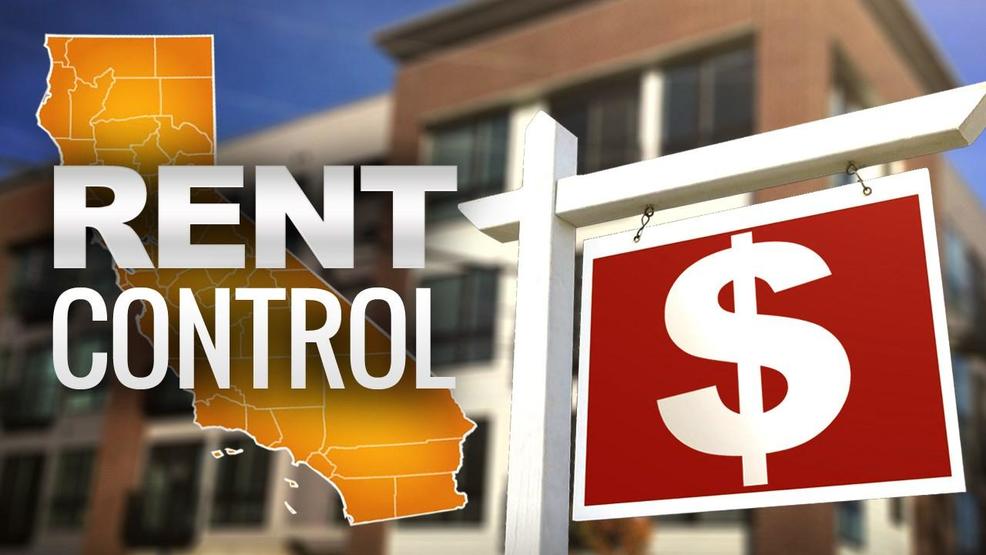

Over the last few years, we have seen the devastating impact of a poorly regulated housing market on people’s livelihoods, as already unaffordable rental prices outpace wage growth. Nationally, median rent has surpassed $2,000 for the first time, and there is not a single state where a worker earning a full-time minimum wage salary can afford a modest two-bedroom apartment.1 We have seen corporate landlords—who own a larger share of the rental market than ever before—use inflation as an excuse to hike rents and reap excess profits beyond what should be considered fair and reasonable.2,3 Renters are struggling as a result.
High rents and a lack of tenant protections negatively impact tenants and their families, as well as the larger economy. At the household level, high rents lead to housing insecurity, homelessness, health challenges, and economic precarity for already-struggling renters. At the regional level, as rents rise, tenants with lower paying jobs are displaced and cannot live within commuting distances of employment, which hurts economic growth and perpetuates job dislocation. At the national level, rent makes up about one-third of the Consumer Price Index, and rent increases have played a major role in the recent uptick in inflation and run the risk of posing long-term threats to the  nation’s economy.7
nation’s economy.7
Fannie Mae and Freddie Mac mortgages on the secondary market support nearly half of rental units in the U.S. With this large of a market share, Government Sponsored Entities (GSEs) have the influence needed to meaningfully change the trajectory of the housing crisis. We believe that implementing rent regulations as a condition on federally-backed mortgages will protect tenants, stabilize neighborhoods, promote income diversity in regional economies, and improve the long-term outlook for housing affordability. We encourage the FHFA to pursue this policy alongside other forms of tenant protections and efforts to increase the supply of truly affordable housing.
The Economics of Rent Regulations and Empirical Research to Date (Questions A-1, A-2, and A-4)
Among economists, the debate around the merits and drawbacks of rent regulation is in a similar situation as the minimum wage was in the late 20th Century. Neoclassical economists traditionally have understood rent regulation to be a misguided policy based on a simple abstract model, which is essentially the same model that incorrectly led economists to understand minimum wage as a policy that would lead to widespread job loss. But the past twenty years of empirical research analyzing the minimum wage have indeed found that minimum wage increases are effective at increasing living standards for low-wage workers with little to no impact on job loss.9 As a result, economists have now embraced minimum wage increases as a crucial policy to reduce inequality and ensure people are paid a fair wage.
Similarly to the minimum wage debate, the economics 101 model that predicts rent regulations will have negative effects on the housing sector is being proven wrong by empirical studies that better analyze real world dynamics. For example, empirical research on local rent control policies in San Francisco, CA and New York, NY found that rent regulations lower housing costs for households living in regulated units.10 In Cambridge, MA, empirical research showed that the repeal of rent stabilization laws resulted in an average rent increase of $131 for tenants (approximately $200 in current USD).11 Evidence from San Francisco shows that rent control helps stem tenant displacement in a high-cost market. International research on national rent control policies like that of Denmark similarly show that rent regulation is associated with a reduction in tenant mobility.
Rent regulations support those who need it most, including those who are not being adequately and safely served by the current set of regulations that provide landlords substantial market power in the housing market. In New York City, for example, tenants who live in rent-stabilized units are disproportionately low-income.14 Studies have also found that rent regulations tend to primarily help older households and renters of color.
There is substantial empirical evidence that rent regulation policies do not limit new construction, nor the overall supply of housing. A 2007 study of rent control analyzed 76 cities in New Jersey with varying rent stabilization laws, controlling for population, demographics, income, and renter-occupied units, finding little to no statistically significant effect of moderate rent controls on new construction.16 Other studies have found similar results. When rent control was repealed in Massachusetts, there was no corresponding increase in housing supply, highlighting again a lack of causal relationship between rent regulations and housing supply.17 Importantly, there are studies that show that rent control laws can cause landlords to search for loopholes, such as condo conversions, that impact the supply of rental housing; however this simply highlights the need for policy design to eliminate loopholes.18
Additionally, rent regulations can benefit the economy as a whole, helping people stay housed closer to their jobs and communities, and making it easier for employers to find qualified job seekers locally. Rent regulations can also be a powerful tool to reduce inequality and promote economic diversity. In addition, unlike most assistance programs, rent regulations do not require significant public resources to administer. Absent rent regulations, we see rising homeless rates leading to increased public expenditures on emergency rooms, jails, prisons, and the courts system.19 Not only are these expenditures harmful to individuals and families experiencing housing insecurity, but they come with a macroeconomic and public cost.
The impact of conditioning GSE-backed loans on a set of rent regulations
We believe that the FHFA can pursue bold rent regulations and tenant protections while continuing to provide liquidity and stability in the housing market for rental properties. Further, incorporating tenant protections and rent control regulations will ensure that benefits from the FHFA are shared more broadly, including with tenants, through the promotion of rental affordability and stability.
First, given the generous and enticing loan terms offered by the federal government, there is a strong argument that GSEs will maintain their market share even with conditioning loan financing on a set of tenant protections. Fannie Mae and Freddie Mac offer more attractive terms than many regional banks, including interest-only periods and high loan-to-value ratios. Moreover, the GSEs have a particular advantage in the current moment of interest-rate instability, where their lending model and implicit government guarantee means that they can price long-duration financing that balance sheet lenders cannot. Second, GSE-backed properties comprise approximately half of the multi-family rental market nationwide. With that market share, the FHFA has significant leverage, especially in the case of larger loans nearing maturity in the coming years that will need to be refinanced. Third, federal rent regulation policies can be designed to maintain landlords’ ability to make a fair and reasonable profit.
Conclusion
At its core, rent regulations are aimed at rebalancing the power dynamics between tenants and landlords, which disproportionately favor landlords. Through well crafted policies, rent regulations can be designed in a manner that protects the general health and well-being of renters, promotes affordability, mitigates future inflationary episodes, and maintains landlords’ ability to receive a fair and reasonable return on their investment. We welcome any further conversation about this topic and would be glad for the opportunity to lend our expertise to the FHFA, if of interest.
Sincerely,
Mark Paul, Rutgers University
James K. Galbraith, The University of Texas at Austin
Isabella Weber, University of Massachusetts Amherst
Janelle Jones, Chief Economist and Policy Director, SEIU
J.W. Mason, John Jay College CUNY, and the Roosevelt Institute
devin michelle bunten, Massachusetts Institute of Technology
David Stein, University of California Santa Barbara
Carolina Alves, Cambridge University
Randy Albelda, University of Massachusetts Boston
Ignacio González, American University
Justin Bloesch, Columbia University and the Roosevelt Institute
Nathan Tankus, Research Director, Modern Monetary Network
Pavlina Tcherneva, Bard College
Stephanie Seguino, University of Vermont
Paul Williams, Executive Director, Center for Public Enterprise
Jacqueline Sternio, Norwich University
Chris Becker, Groundwork Collaborative
David Fields, Utah Department of Workforce Services
Anders Fremstad, Colorado State University
Alex Williams, Employ America
Lauren Melodia, Deputy Director, Center for NYC Affairs, The New School
Charalampos Konstantinidis, University of Massachusetts Boston
James K Boyce, University of Massachusetts Amherst
Marco Ranaldi, University College London
Michael Ash, University of Massachusetts Amherst
Leila Davis, University of Massachusetts Boston
Mark Joseph Stelzner, Connecticut College
Ian J. Seda-Irizarry, John Jay College CUNY
Geert Dhondt, John Jay College CUNY
Osman Keshawarz, Trinity College
Ira Regmi, Roosevelt Institute
Zhun Xu, City University of New York





If we had an excess of housing and prices were still high, I might for a second stop to consider these’ economists high-level generalized argument for Rent Control.
But our current price problems are ENTIRELY explainable by a much much simpler economic theory: Supply and Demand.
We need 10,000 – 20,000 more housing units at the very least, to balance our housing market. That is the size of the population that currently commutes here every day to work.
We need to build housing tailored to our economy, and allow so much of it that landlords have to compete for tenants. THAT is the the solution to our rents problem.
One of the points of consensus around growth in this town is the preferred solution is densification and infill. The most reasonable pathway to densification being a significant part of the solution is if a big chunk of our existing 1-2 story student housing and apartments get replaced with taller 3-5 story buildings.
There are a LOT of these lower density student housing structures sprinkled around town that were built in the 1960 and are candidates for replacement.
But if we adopt rent control we destroy ANY incentive for a landlord to re-develoop those kinds of properties. What will happen is what has happened in all other rent control situations: The landlord will become a slumlord.
We need to simply focus on providing much, much more supply, and we can do that by reforming our approvals process for development, both on the periphery and for re-development projects.